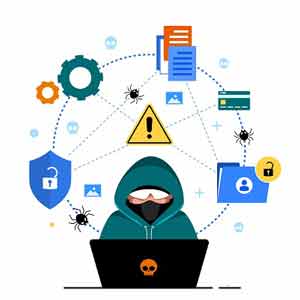Comprehensive Guide to Handling a Data Breach & Security
What is a Data Breach?
A data breach occurs when sensitive, protected, or confidential data is accessed or disclosed in an unauthorized manner. This can involve personal information, financial data, health records, intellectual property, and more.

Common Causes of Data Breaches
- Phishing Attacks: Fraudulent emails designed to trick individuals into divulging sensitive information.
- Malware: Malicious software that infiltrates systems to steal data.
- Weak Passwords: Easily guessed passwords that allow unauthorized access.
- Insider Threats: Employees or associates with access to sensitive data exploiting their position.
- Unpatched Software: Systems and applications that are not updated with the latest security patches.
Immediate Steps to Take Following a Data Breach
1. Contain the Breach
Immediately contain the breach to prevent further data loss. Disconnect affected systems from the network, disable compromised accounts, and block unauthorized access points.
2. Assess the Scope and Impact
Determine the extent of the breach by identifying which data has been compromised and how it was accessed. Assess the potential impact on your organization and the individuals affected.
3. Notify Affected Parties
Notify individuals whose data has been compromised. This notification should include the nature of the breach, the type of data involved, and steps they can take to protect themselves.
4. Report to Authorities
Report the breach to relevant authorities, such as the Information Commissioner’s Office (ICO) or other regulatory bodies, as required by law.
5. Investigate the Cause
Conduct a thorough investigation to identify the cause of the breach. This may involve forensic analysis and collaboration with cybersecurity experts.
Long-term Strategies for Data Breach Prevention
Strengthen Security Measures
Implement robust security measures to protect against future breaches. This includes:
- Multi-Factor Authentication (MFA): Adding an extra layer of security beyond passwords.
- Encryption: Ensuring data is encrypted both in transit and at rest.
- Regular Security Audits: Conducting frequent audits to identify vulnerabilities.
Employee Training
Educate employees about cybersecurity best practices, including recognizing phishing attempts, creating strong passwords, and reporting suspicious activities.
Update and Patch Systems
Regularly update and patch systems to protect against known vulnerabilities. This includes operating systems, applications, and security software.
Develop an Incident Response Plan
Create a detailed incident response plan outlining steps to take in the event of a data breach. This plan should include roles and responsibilities, communication strategies, and recovery procedures.
Legal and Regulatory Considerations
Compliance with Data Protection Laws
Ensure compliance with relevant data protection laws such as the General Data Protection Regulation (GDPR) and the California Consumer Privacy Act (CCPA). These laws mandate specific actions in the event of a data breach and can impose significant penalties for non-compliance.
Documentation and Record-Keeping
Maintain detailed records of the breach, including how it was discovered, the steps taken to address it, and the communications with affected parties and authorities. This documentation is crucial for regulatory compliance and potential legal proceedings.
Working with Legal Counsel
Engage legal counsel to navigate the complexities of data breach laws and to ensure all legal obligations are met. Legal advice can also help in mitigating liability and managing the aftermath of a breach.
Creating a Resilient Cybersecurity Framework
Risk Assessment and Management
Conduct regular risk assessments to identify and mitigate potential threats. This involves evaluating the likelihood and impact of different types of breaches and implementing controls to address them.
Implementing Advanced Technologies
Adopt advanced technologies such as artificial intelligence (AI) and machine learning (ML) to enhance threat detection and response capabilities. These technologies can help identify patterns and anomalies that may indicate a breach.
Collaboration and Information Sharing
Collaborate with industry peers, cybersecurity organizations, and government agencies to share information about threats and best practices. Participation in information sharing networks can enhance your organization’s ability to respond to emerging threats.
Conclusion
Handling a data breach effectively requires immediate action, thorough investigation, and long-term preventive measures. By strengthening your cybersecurity posture, educating employees, and complying with legal requirements, you can mitigate the impact of breaches and protect sensitive data.


